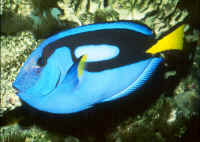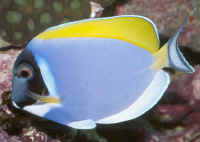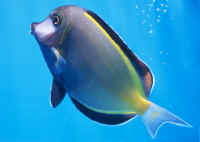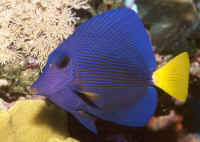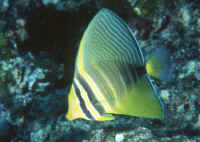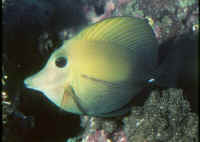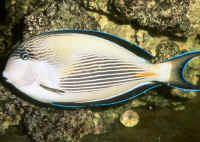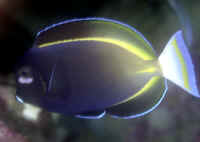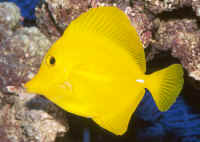Catpicklesdog
Hindsight is a wonderful thing!
Acanthurus olivaceus
Scientific Name: Acanthurus olivaceus
Common Names: Orangeshoulder Surgeonfish (Orangeband Surgeonfish, Orangeshoulder Tang)
Care Level: Relatively easy
Adult Size: 13.8in
pH Range: 8.1 – 8.3
Temperature Range: (F/C) 77-79F/25-26C
Specific Gravity/Hardness Range: 1.023-1.026
Origin/Habitat: Western Pacific
Temperament/Behaviour: Will usually ignore tankmates, including other acanthurids.
Compatible Tank mates: Clowns, Blennies, Gobies, Angels.
Diet: Varied diet, mostly vegetable matter. Feed dried and frozen herbivore foods that contain marine algae and the blue green alga Spirulina. Supplement with pieces of zucchini, broccoli, leaf lettuce and sushi nori (dried seaweed).
Tank Size For Adult: 135gal(511l)
Narrative: Rarely bothers corals. Feeds by sucking filamentous algae, diatoms and detritus of the sand surface. This is a large eye catching fish with a more-peaceful disposition than some others in the genus. Best housed in a large tank with plenty of swimming room and an open sand bottom for grazing. House only one per tank, unless keeping an adult and a juvenile in a large system. If placing with other surgeonfishes (except A. nigricans and A. triostegus, which are less aggressive) add this species first. Juveniles are yellow overall and lack the characteristic orange shoulder patch, which develops as it grows.
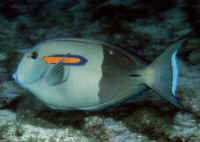
Courtesy of WetWebMedia.com

Scientific Name: Acanthurus olivaceus
Common Names: Orangeshoulder Surgeonfish (Orangeband Surgeonfish, Orangeshoulder Tang)
Care Level: Relatively easy
Adult Size: 13.8in
pH Range: 8.1 – 8.3
Temperature Range: (F/C) 77-79F/25-26C
Specific Gravity/Hardness Range: 1.023-1.026
Origin/Habitat: Western Pacific
Temperament/Behaviour: Will usually ignore tankmates, including other acanthurids.
Compatible Tank mates: Clowns, Blennies, Gobies, Angels.
Diet: Varied diet, mostly vegetable matter. Feed dried and frozen herbivore foods that contain marine algae and the blue green alga Spirulina. Supplement with pieces of zucchini, broccoli, leaf lettuce and sushi nori (dried seaweed).
Tank Size For Adult: 135gal(511l)
Narrative: Rarely bothers corals. Feeds by sucking filamentous algae, diatoms and detritus of the sand surface. This is a large eye catching fish with a more-peaceful disposition than some others in the genus. Best housed in a large tank with plenty of swimming room and an open sand bottom for grazing. House only one per tank, unless keeping an adult and a juvenile in a large system. If placing with other surgeonfishes (except A. nigricans and A. triostegus, which are less aggressive) add this species first. Juveniles are yellow overall and lack the characteristic orange shoulder patch, which develops as it grows.

Courtesy of WetWebMedia.com

Last edited:


